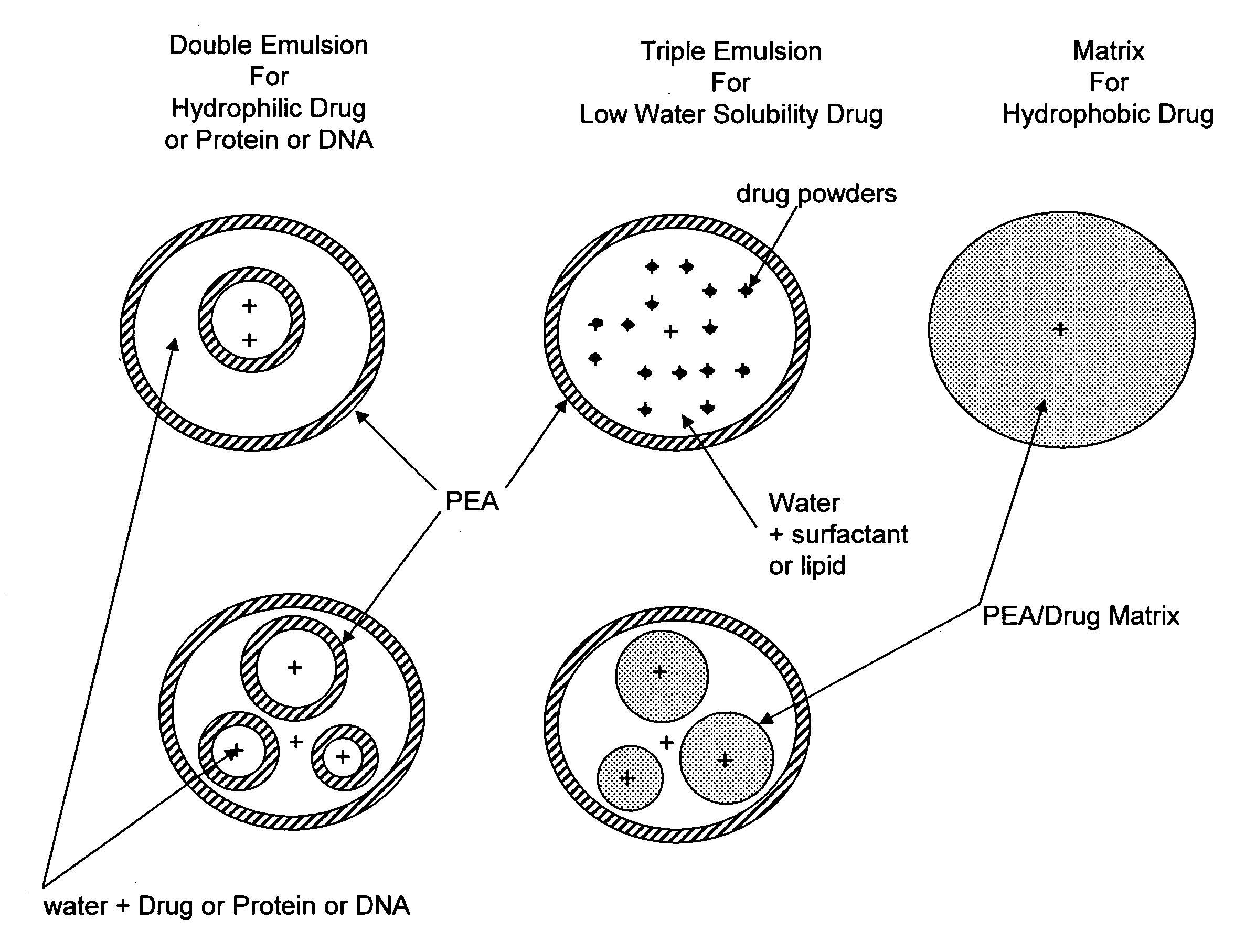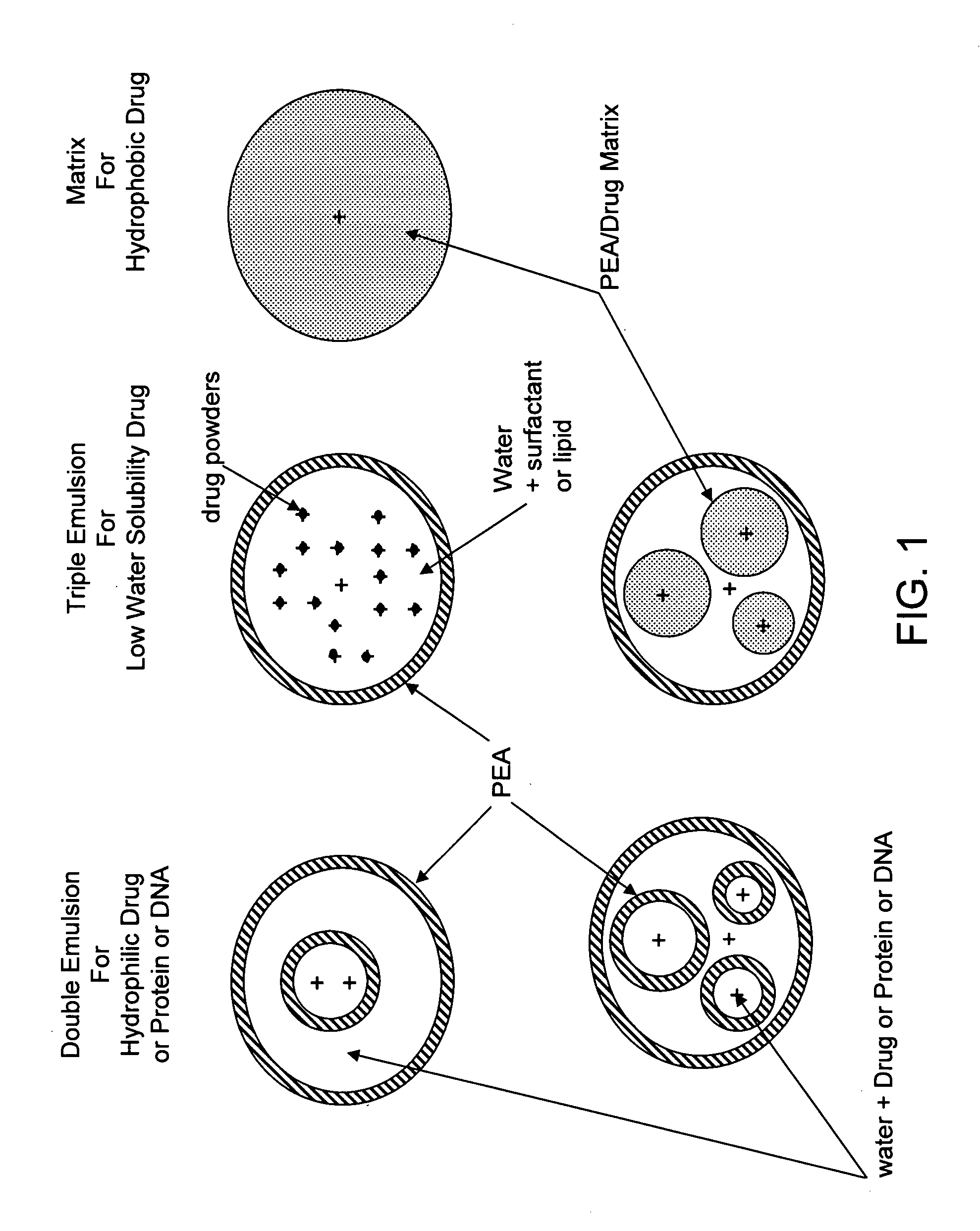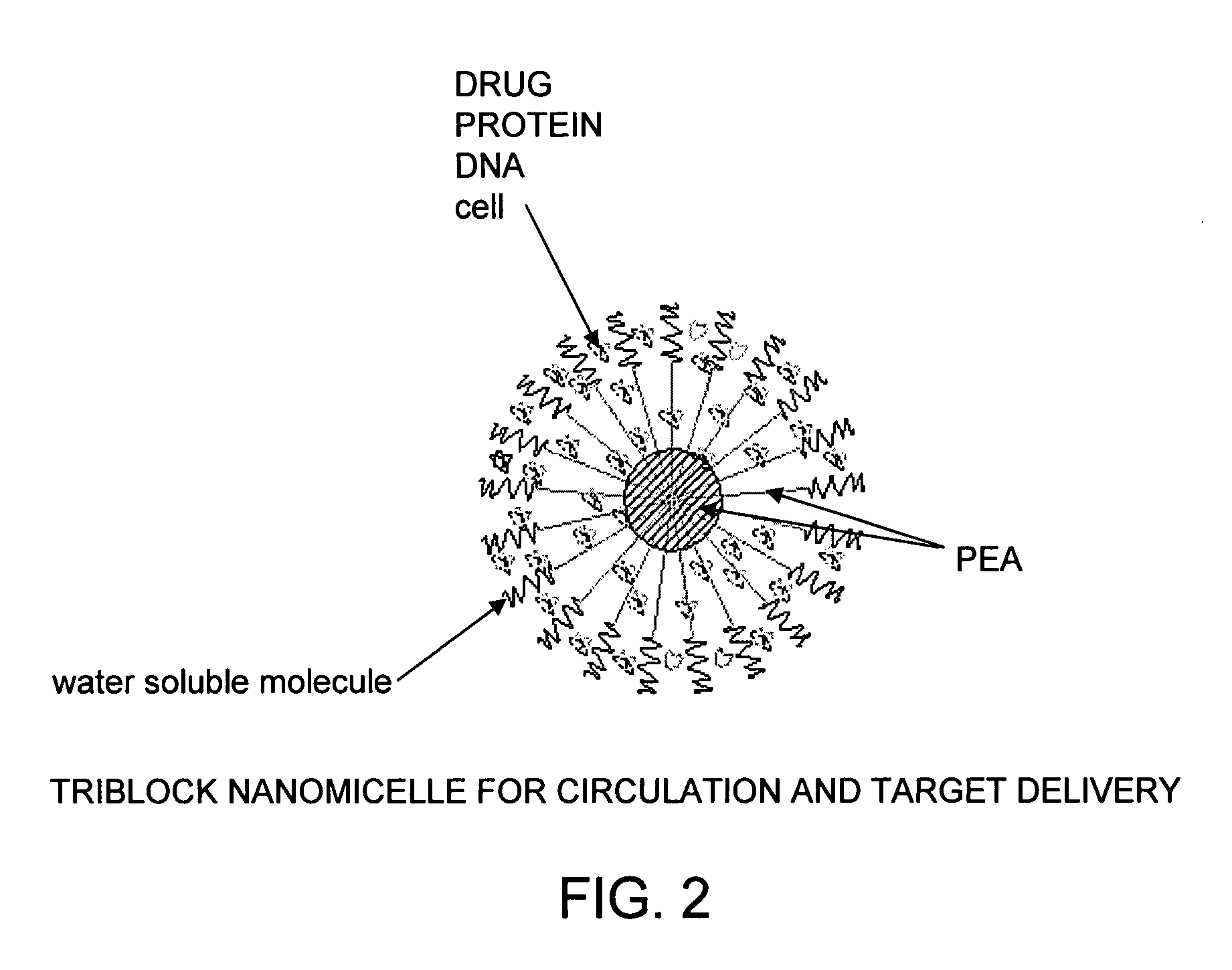Vaccine delivery compositions and methods of use
a composition and vaccine technology, applied in the field of immunogenic compositions, can solve the problems of relatively weak adjuvants, aluminum compounds may not be ideal adjuvants, and subunit vaccines that lack activity, etc., and achieve the effect of easy production
- Summary
- Abstract
- Description
- Claims
- Application Information
AI Technical Summary
Benefits of technology
Problems solved by technology
Method used
Image
Examples
example 1
Synthesis of PEA-Antigen Conjugate
[0220]Synthesis of PEA succinimidyl ester (PEA-OSu). All examples are from N-acetylated polymer (A). PEA 1.392 g, 754 μM, calculated for MW=1845 per repeating unit (Formula I, R1═(CH2)8; R2═H; R3═(CH3)2CHCH2; R4═(CH2)6; n=70; m / m+p=0.75 and p / m+p=0.25) was dissolved in 7 ml anhydrous DMF while stirring. To the slightly viscous solution of PEA was added N-Hydroxysuccinimide (NHS), 0.110 g, 955 μM as a solid. 1-Ethyl-3-(3′-dimethylaminopropyl)carbodiimide hydrochloride, 146 mg, 759.8 μM, was transferred as a suspension in DMF. The total volume of DMF for the reaction was 10 ml. The reaction was carried out at room temperature under nitrogen atmosphere for 24 hrs.
Synthesis of PEA-Influenza Peptide Conjugate:
[0221]B1) The synthesis of PEA-Peptide conjugate (Formula IV, R1═(CH2)8; R3═(CH3)2CHCH2; R4═(CH2)6; R5═NH; n=70; m / m+p=0.75 and p / m+p=0.25 and R7═PKYVKQNTLKLAT) was performed with 49.5 μM aliquot of the activated ester (A) in DMF and 96 mg (49.5 μM)...
example 2
[0227]Cytotoxic T Cell Response from PEA-Melanoma Peptidic Antigen Delivery to APCs
[0228]We examined the ability of PEA-melanoma peptides to induce a cytotoxic T lymphocyte killing response. MHC I restricted peptides from 2 melanoma-associated proteins, gp100 and MART-1, were used as peptidic antigens and conjucated to PEA as described in Example 1. Peripheral blood was collected from healthy human donors who expressed the MHC 1 allele, HLA-A2. Peripheral blood mononuclear cells (PBMC) were isolated from the blood and exposed to the MART-1 peptide, the gp100 peptide, PEA-MART-1 conjugates, or PEA-gp100 conjugates. Tumor infiltrating lymphocytes were isolated from HLA-A2 melanoma patients, and the ability of these cells to kill the peptide- or construct-treated peripheral blood mononuclear cells was measured by release of lactose dehydrogenase into the culture media by killed cells. Polymer only, peptide only, or a mixture of polymer and peptide did not induce the tumor infiltrating ...
example 3
[0229]In Vivo T Cell Response from PEA-HIV Peptidic Antigen Delivery
[0230]A peptide antigen, longer than the actual epitope, was used to demonstrate proper processing and an MHC-I restricted T cell response in vivo. BlockAide / CR (H-RINRGPGRRAFVTIGK-NH2) (Adventrx Pharmaceuticals, Inc.) is a synthetic peptide based upon the structure of the V3 loop of the gp120 coat protein from human immunodeficiency virus (HIV). The virus uses this structure to bind to the cell surface before viral fusion takes place. The peptidic antigen was conjugated to PEA as described in Example 1 herein. Mice were immunized with peptide, peptide-adjuvant mixtures, or PEA-peptide conjugates containing 20 μg BlockAide / CR by up to 4 weekly subdermal injections into the tail. By surgical excision, spleens were collected from three mice per group 1 week following the 2nd immunization and 1 week following the 4th immunization. Peptide-specific T cell responses were analyzed by IFN-γ and IL-2 specific ELISpot assays...
PUM
| Property | Measurement | Unit |
|---|---|---|
| Time | aaaaa | aaaaa |
| Time | aaaaa | aaaaa |
| Diameter | aaaaa | aaaaa |
Abstract
Description
Claims
Application Information
 Login to View More
Login to View More - R&D
- Intellectual Property
- Life Sciences
- Materials
- Tech Scout
- Unparalleled Data Quality
- Higher Quality Content
- 60% Fewer Hallucinations
Browse by: Latest US Patents, China's latest patents, Technical Efficacy Thesaurus, Application Domain, Technology Topic, Popular Technical Reports.
© 2025 PatSnap. All rights reserved.Legal|Privacy policy|Modern Slavery Act Transparency Statement|Sitemap|About US| Contact US: help@patsnap.com



